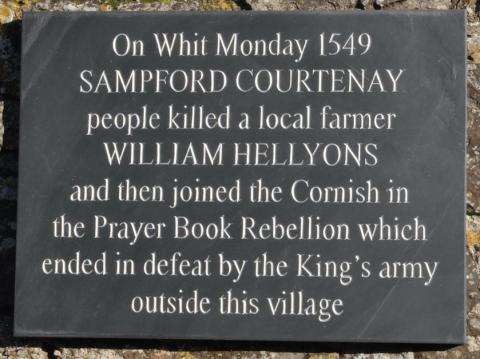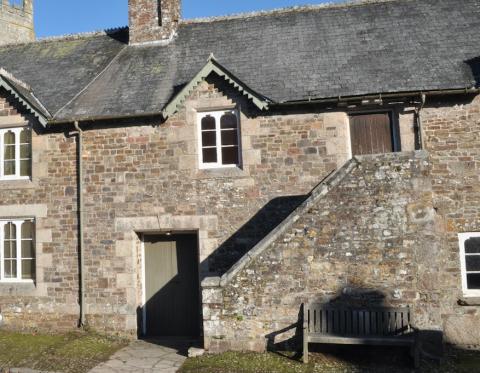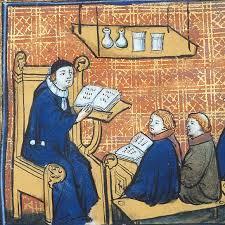History of Sampford Courtenay


Sampford Courtenay is most famous historically as a centre for the Prayerbook rebellion of 1549 and where the rebels made their final stand. The rebellion saw thousands unite against changes to traditional forms of religion imposed by the government of the boy-king Edward VI.
Split from Rome
For well-known personal and political reasons, in the 1530s, Edward VI’s father, Henry VIII, decided to split from Rome and the Catholic faith. As the crown dissolved the monasteries and seized their wealth, people became more and more disaffected. By the time Edward came to the throne in 1547, at the age of nine, religious discontent was rife.
With a boy-king in power, government was in the hands of councillors. A set of injunctions for religious reform was imposed and inventories drawn up listing the possessions of every parish church in the country. Assuming that the crown would confiscate these goods too, people became increasingly angry and there was a serious uprising in west Cornwall in 1548 – often seen as a precursor to the rebellion of the following year.
A South-West revolt
In 1549, the government introduced a new Book of Common Prayer. Printed in English, the book was alien to those accustomed to hearing church services in Latin and proved even more incendiary in Cornwall, where many people still spoke Cornish. In June, thousands in Cornwall, including parish priests, gathered at the ancient hill fort of Castle Canyke near Bodmin and, within a few days, had captured all who remained loyal to the king.
The protest quickly spread to Sampford Courtenay, where, the day after the new prayerbook came into force, the villagers demanded that their priest wear his old garments and read from the old prayerbook. He swiftly reverted to “his old popish attire and sayeth mass and all such services as in times past accustomed”. A local yeoman farmer, William Hellyons, tried to remonstrate with the rebels but they dragged him to Church House (left), “where he so earnestly reproved them for their rebellion and so sharply threatened them… that they fell in a rage with him: and not only with evil words reviled him, but also as he was going out of the church house and going down the stairs, one of them… with a bill struck him in the neck, and immediately notwithstanding his pitiful requests and lamentations, a number of the rest fell upon him and slew him and cut him in small pieces”.
The last stand
The events at Sampford Courtenay had a snowball effect. Cornish rebels were soon marching over the Devon border to join forces with those at Sampford Courtenay. In July 1549, 4,000 to 6,000 Cornish and Devon rebels besieged Exeter, the regional capital, which was loyal to the crown. The siege dragged on for six weeks “until the famine was so sore, that the people [of Exeter] were fain to eat horse-flesh”. The insurgents failed to seize Exeter and the government ordered John Russell, First Earl of Bedford, to put down the rebellion. Several thousand rebels were killed during a series of brutal engagements fought on the eastern side of the city. Then, in a battle fought at Sampford Courtenay on 17 August, the royal army of some 8,000 men finally crushed the insurgents.
The 15th-century Church House still stands in Sampford Courtenay, as do the steps outside on which Hellyons was murdered.
Past, Present and Future
We are trying to set up a History Group within the parish to research and record the history of various properties and landmarks within the parish.
If you know the History of your own property please email them to Marion Pratt at marion174@btinternet.com so it can be included on this page.
A Tale of Some Houses
At the Devon Family History Event on Sat 18th May - Marion Pratt gave a presentation on the history of some of the properties in Sampford Courtenay.
If you missed this event - the presentation can be downloaded below.
This is only the start - we would like to gather more information about the properties in Sampford Courtenay and are happy to recieve any research you may have on your own home.
Or, if you don't know where to start ... come along to our Time Travellers meeting on Fri OCT 4TH.

Mistress Pratt & Master Botting Page explain the Prayer Book Rebellion to local school children.
Marion Pratt & David Botting Page visited Exbourne and North Tawton Primary Schools to explain the significant Historical Event which took place just down the road from their schools.
Read the presentation below.
Property Histories so far:-
Download the Histories below
Higher Town
Southey Farm
Trecott Farm
The Chapel
Hillcrest
Fir Cottage
4 Part Harveys - Samuel Knight - courtesy of Greg Knight (Great Grandson - Sydney, Australia)
Dornaford - Sepia pictures of Huxtable Snell family - courtesy of Hillary Gozzi.
King's College Sale Catalogue 1921 - which includes Falcadon Farm, Trehill & Aller Farm, Higher & Lower Langabeer Farms, Ratcombe, Chapple Agistment Farm, Fernhills Moor, Fox Calvert, Falcadon Moor, Lake Moor, Incott Farm, West Hill Farm, Webber Hill Farm, Agistment Farm, Wood Farm, Brook Farm & Chapple Lands, & Hatherton Farm.
King's College Sale Catalogue 1925 - Glebe - which includes Higher Down, Sand Park, Garden at Sampford Chapple, Thornbury Cottage, Glebe House & Pasture at Oxenpark
King's College Sale Catalogue 1925 - Manor Estate - which includes Frankland Farm, North & South Beerhill Farm, Langmead Farm, Down's & Aller's Cliston Farm, Yondhill Farm, Incott Farm.
King's College Sale Catalogue 1928 - which includes Southtown Farm, the New Inn, Rose Cottage (Lot 6), Brook Cottage (Lot 15), Cherrywell, The Village Shop & Post Office, Thornbury Cottage, Underdown, & Incott Farm.
King's College Sale Catalogue 1929 - which includes Solland Farm, Barton Farm, Shore's Meadow, Harvey's in Town, Forge, Shoeing Shop, Cottage & Garden, Village Shop & Post Office, Wood's Cottages, Hammett's Hill, Lower Trecott Farm, Higher Trecott, Railway Hotel & Bungalow.
Sale Catalogue - 1939 - which included Middletown & Southey.
Sale Catalogue - 2004 - The Barton
